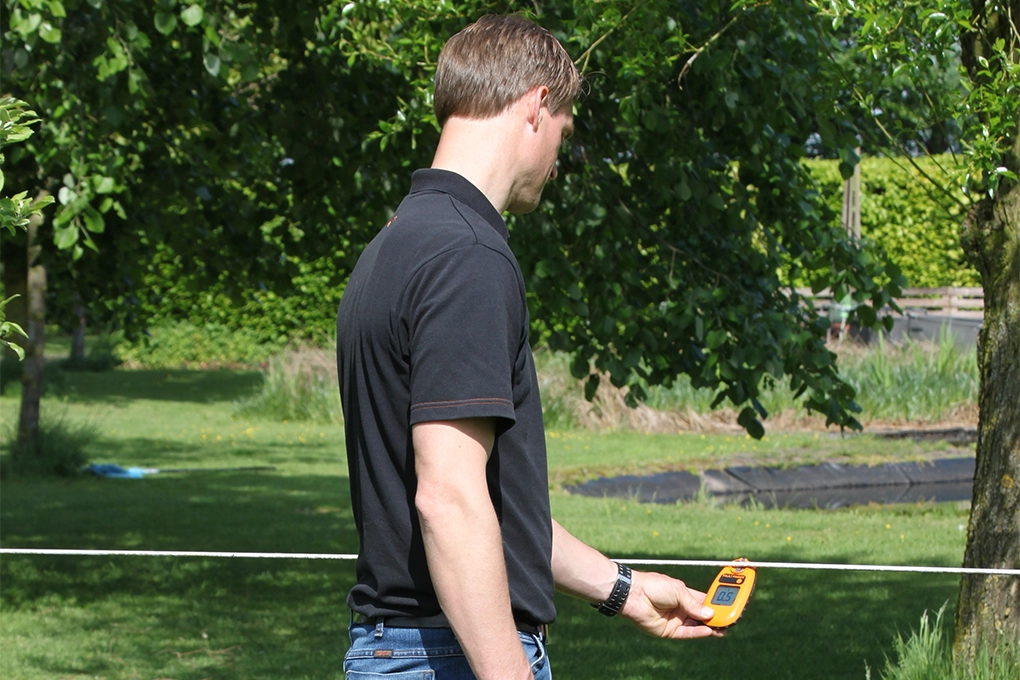
Is there enough voltage on your electric fence?
Testing your fence every week to ensure your animals are safe will take 10 seconds of your time, it is that simple. Yet this happens very rarely. By measuring the voltage on the wire every week and taking action if there are problems, you increase the safety of your pasture. This can save you and your animals a lot of inconvenience. In this topic, we take you through everything you need to know about testing your electric fence. We also give you some tips on what to do if the voltage is too low.
Why enough voltage is important
Too low a voltage increases the risk of your cattle breaking out. This creates unsafe situations and can cause damage and nuisance. There is also a risk of animals coming into contact with the electric fence and becoming entangled. Finally, too low a voltage leads to a higher risk of damage. If animals are not deterred, they are more likely to rub or chew on fence components.

What voltage for optimal operation?
Gallagher recommends a voltage of at least 3.5 kV for keeping animals inside. Are you using the fence to keep out wild animals? Then maintain a minimum of 4.5 kV.
How often do you test electric fence?
Gallagher recommends doing the Gallagher Check every year. With this comprehensive check, you can maintain your fence top condition. This does not mean that you do not have to worry about it for a whole year. Gallagher recommends measuring the voltage of pastures where animals graze at the following times. This is as simple as holding a tester to the wire; 10 seconds' work.
When the animals move to a new pasture.
In normal weather: every week
In dry weather: twice a week
After a period of strong wind
Do you use a battery energiser? Then test with greater regularity as time passes since you charged or replaced the battery.
What do you use to measure the voltage?
Gallagher offers a wide range of testers. These range from a keychain that beeps when you hold it near the electric fence to an automatic fence monitor with smartphone app. In practice, the following testers are the most commonly used:
